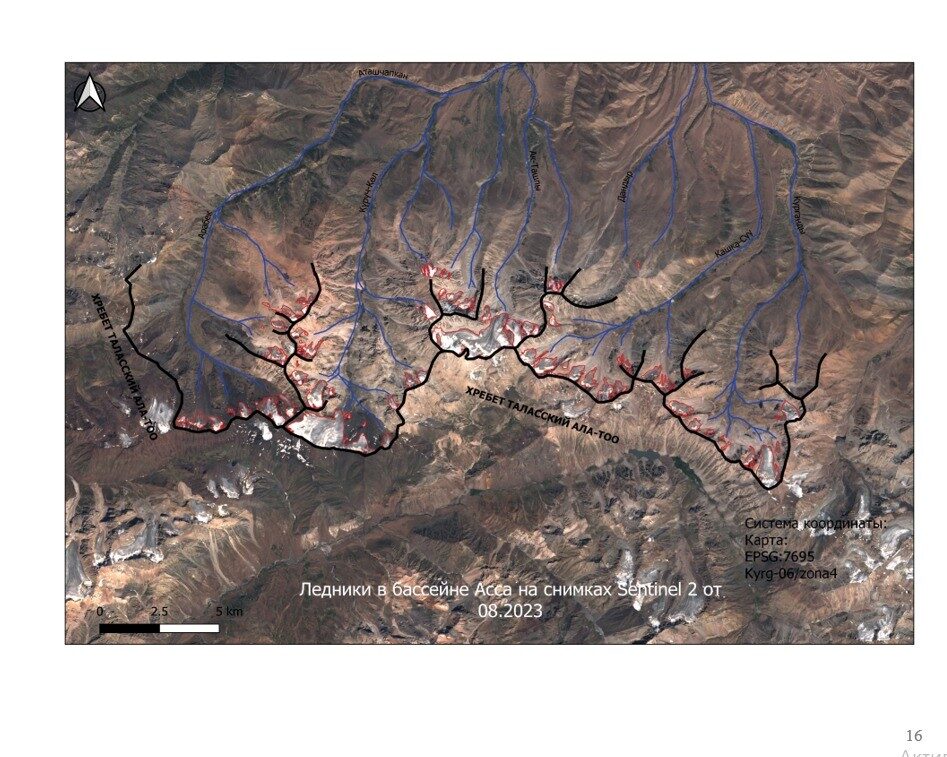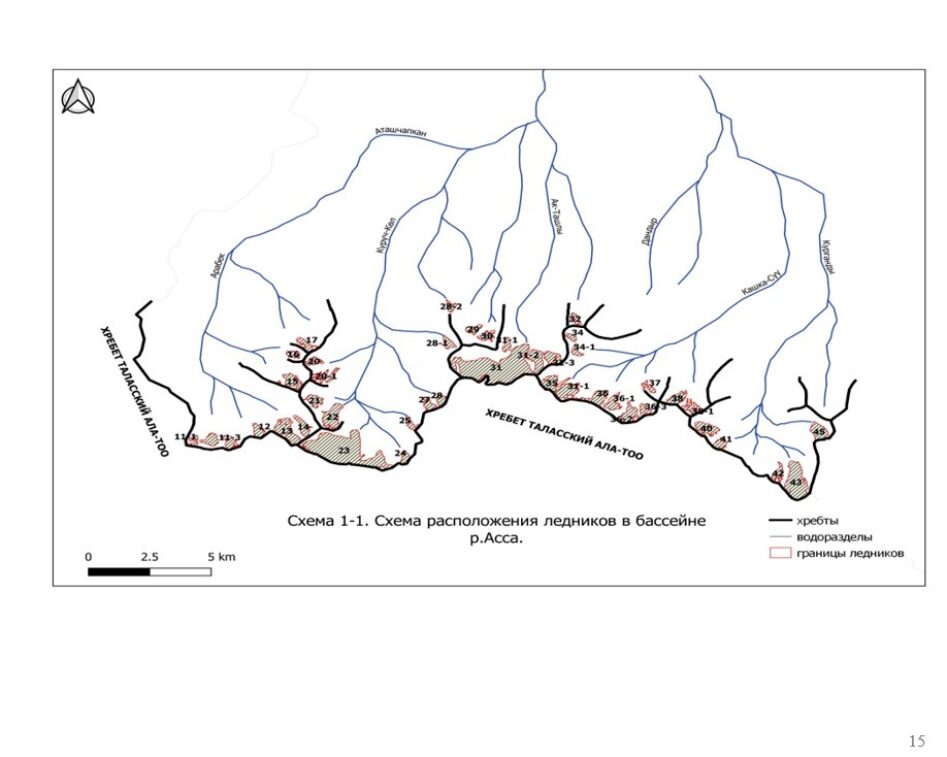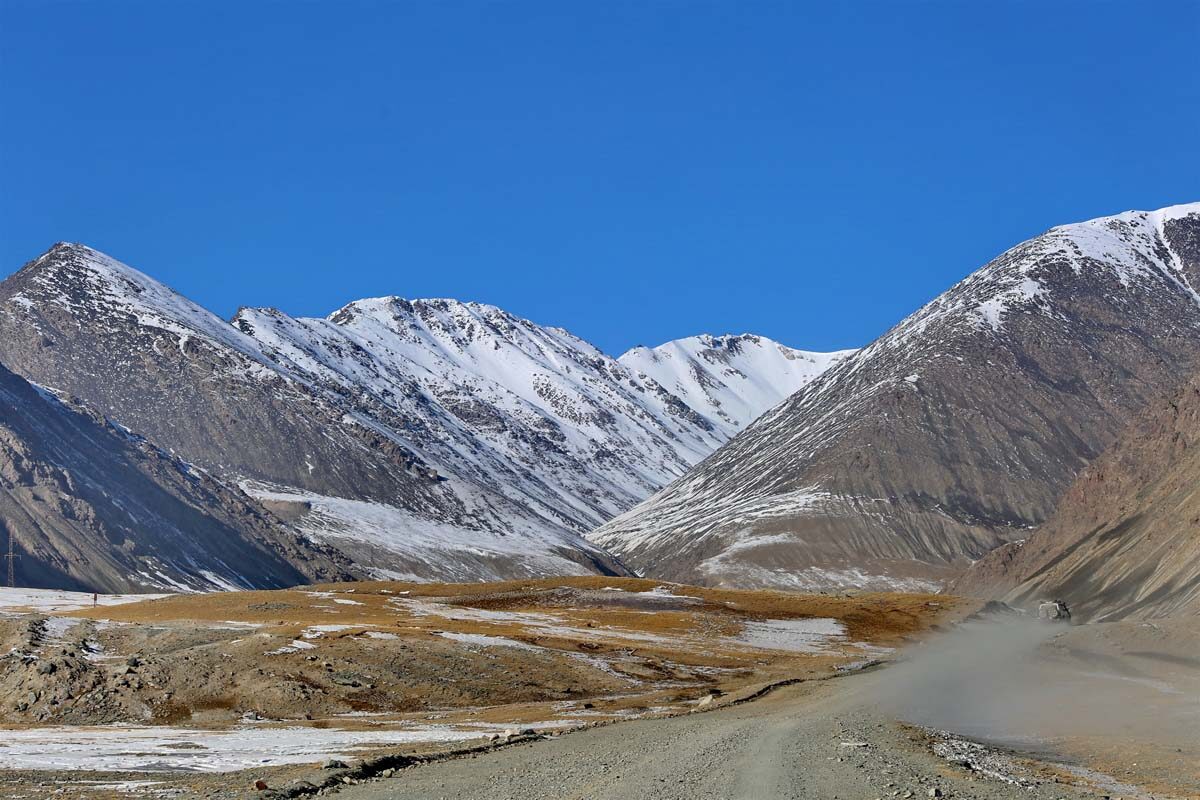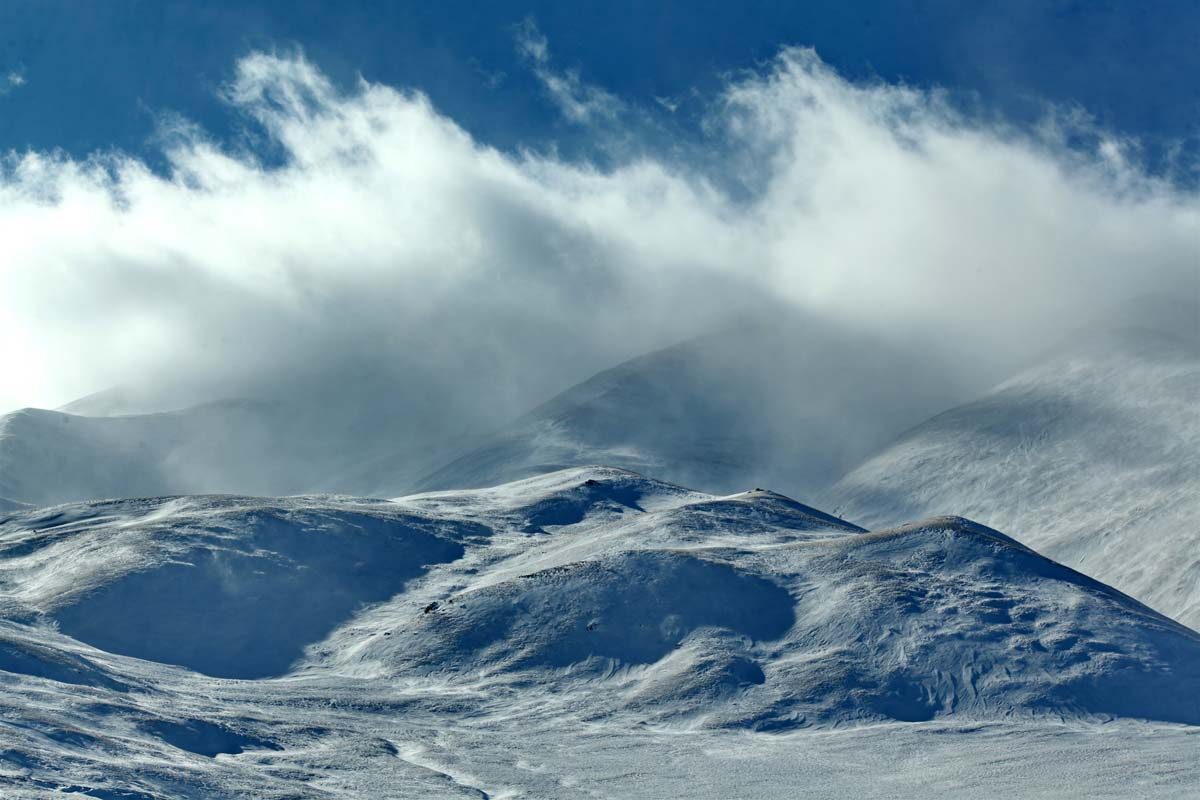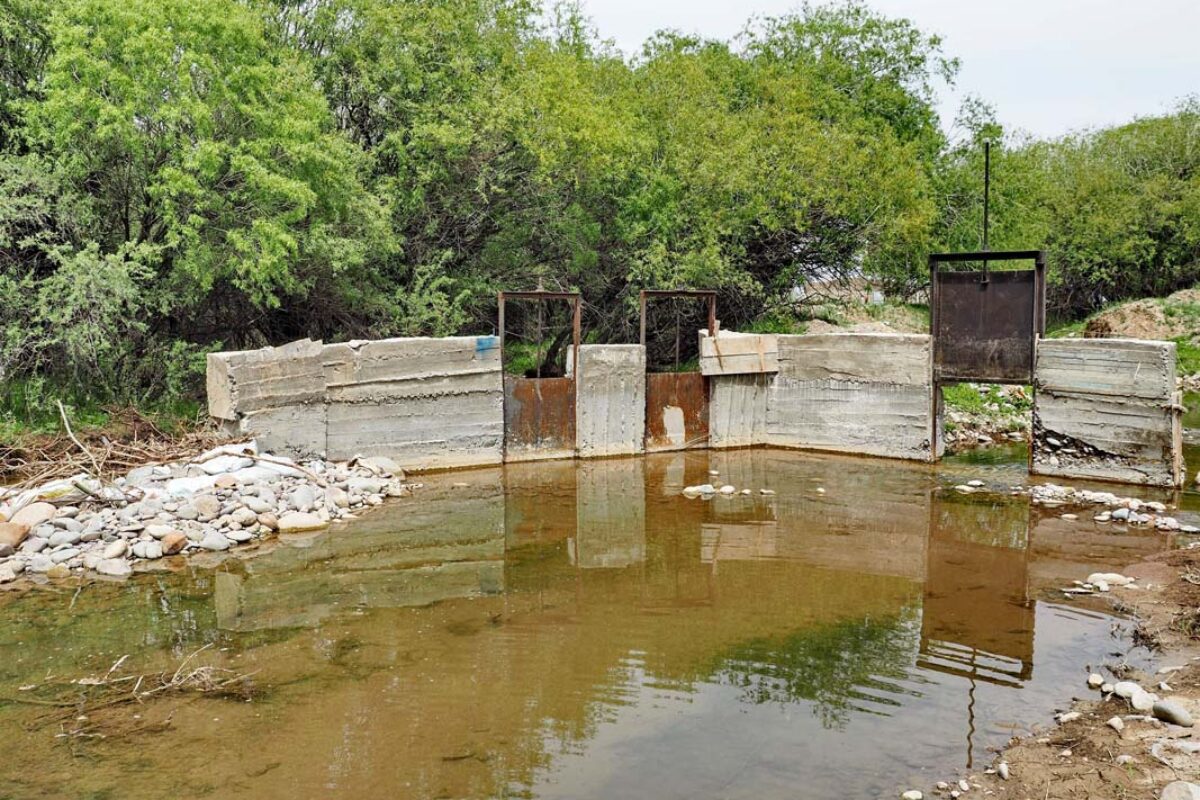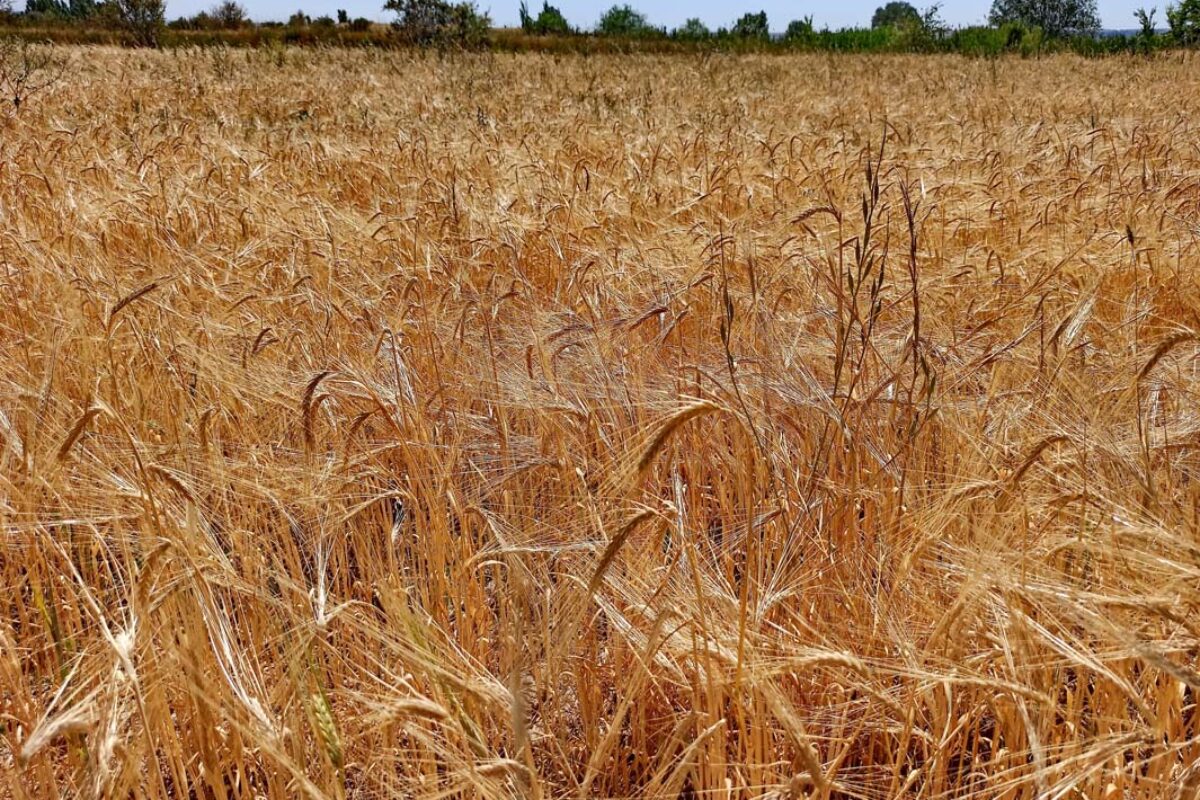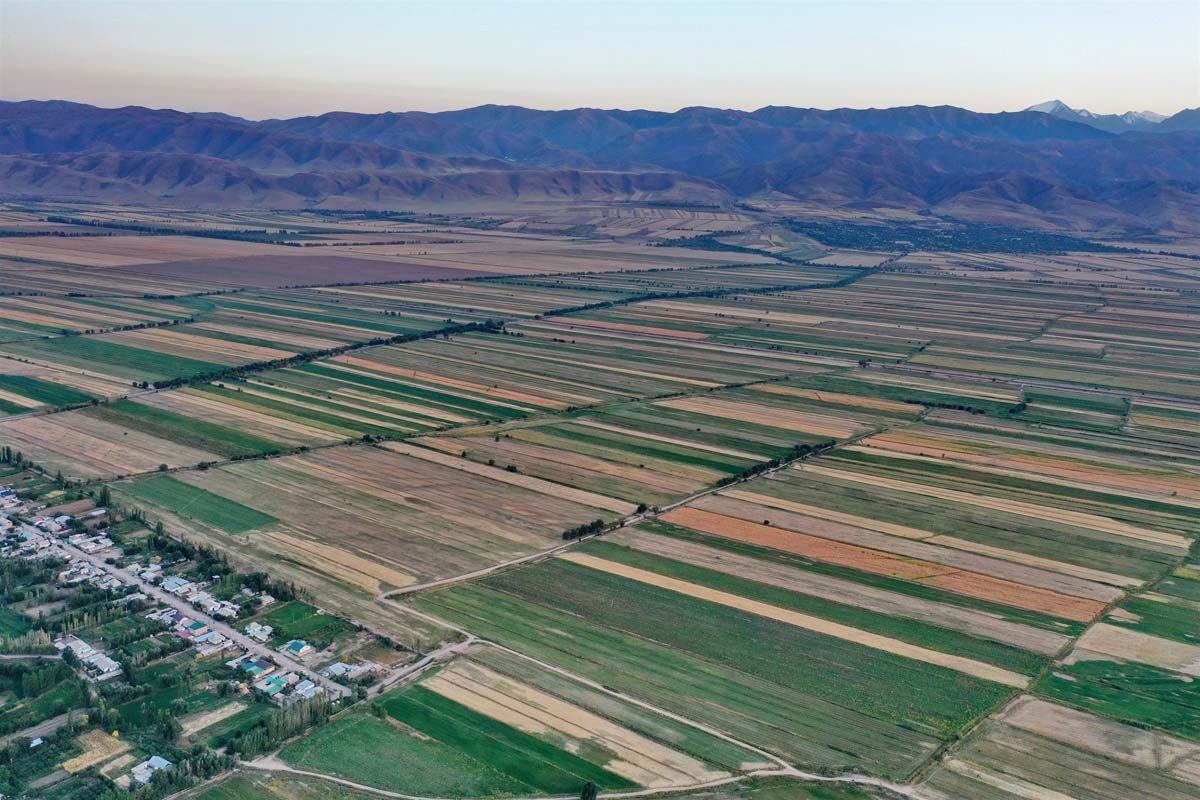In the last 70 years, Kyrgyzstan has lost 16 per cent of its glaciers. It poses a food insecurity risk not only to the country, but also at the regional level.
The shortage of irrigation water in Kyrgyzstan decreases the agricultural crop yield. By last year results, the republic harvested 250 thousand tonnes of crops less than a year before, according to the ministry of agriculture. Wheat crops suffered the most damage and its harvest declined by 152 thousand tonnes.
“In fact, last spring was cold. Back then, spring crops were planted late and their growth delayed because of cold weather. Then, in June, the weather became very hot, irrigation water was in short supply, and the crop yield was very low,” said Azamat Narynbekov, chief specialist of the Ministry of Water Management, Agriculture and Processing Industry of the Kyrgyz Republic.
Low crop yields hit farmers in the pocket. Last year, Aitbek Koshaliev of Talas region planted safflower in 20 hectares of land. After a hot summer, the farmer covered only 70 per cent of all costs.
Farmers in neighbouring Kazakhstan faced the same problem last summer. Amid the heat wave and severe drought in six districts of Dzhambyl region, authorities had to declare the state of emergency. The border areas of Kazakhstan receive irrigation water from the Kirovskoye reservoir in Talas region of Kyrgyzstan. Last year, water supply stopped due to lack of water.
Talas basin. Photo: Glaciology and Avalanche Safety Agency of the Kyrgyzgidromet
Kyrgyzstan loses glaciers
Glaciers are the sources of all the rivers in Kyrgyzstan. The Kirovskoye reservoir gets water from the so-called ‘Talas’ basin. Analysis performed by officers of the Glaciology and Avalanche Safety Agency of the Kyrgyzgidromet showed that the area of glaciers has been reduced by 60 per cent in the last 70 years.
“If we compare it to the Soviet Union data, the glaciers in Talas basin have shrunk by 100 square kilometres. To preserve them, we need to take measures to adapt. Otherwise, we would have not only domestic, but also external issues over time,” said glaciologist Sultanbek Belekov.
Photo courtesy of Vladislav Ushakov
According to the Central Asian Institute of Applied Earth Research, the area of glaciation has shrunk across Kyrgyzstan. Now glaciers cover 6,684 square kilometres. In contrast, 13 years ago the ice sheet was 10 times the area. The country has lost 16 per cent of glaciers in the last 70 years.”
“Today, Kyrgyzstan has nearly 10 thousand glaciers with total area about 7 thousand square kilometres. However, the area of glaciation in Kyrgyzstan has decreased by 16 per cent within 70 years. We could lose over 80 per cent of glaciers by the end of the century, while their number has increased by 22 per cent due to the fragmentation of major glaciers,” President Sadyr Japarov said at the One Planet Summit held in Paris in 2023.
The shrinkage of glaciers in Kyrgyzstan poses a threat of drought to the whole region. According to the NISI (National Institute of Strategic Researches of the Kyrgyz Republic), almost half of all water resources of Central Asia develop in the republic. Moreover, 90 per cent of this water is used for irrigation.
Primary changes are already obvious now. In the past, the low-flow period occurred once in 6 years. Now, it happens every second year. The examples are dry years of 2021 and 2023. Authorities must adapt to it by investing more money into improvement of the irrigation system. Kyrgyzstan has allocated 11 million 160 thousand dollars every year to solve the problem for the past three years.
“2 thousand kilometres of canals have been repaired, cleaned and improved for 2.5 years. Nearly 150 devices have been replaced by pump plants, which makes almost 40 per cent. Over 60 wells have been restored,” said Almazbek Sokeyev, director of the Water Resources Service.
Reconstruction of the irrigation system in Kyrgyzstan allows reducing irrigation water losses. According to the NISI, 40 per cent of irrigation water does not reach the fields because of clogged canals and leaky pipes. As a result, one hectare of land wastes 30 per cent more water than arid Egypt and Pakistan.
Photo courtesy of Vladislav Ushakov
Risks to food security
“We used to have more water and we could afford not to take care of the irrigation system condition in the past, but now it’s time to pass from words to deeds. The state must make correct forecasts of water supply in advance. For example, the ministry of agriculture needs to provide support to farmers, conduct a poll among them and suggest crop species to them, i.e. to avoid mass planting that causes concurrent irrigation need,” Gulbara Omorova, research fellow of the Institute of Water Issues, said.
According to her estimates, shrinking glaciers will have a negative effect on the food security of Kyrgyzstan. A decline in water amount leads to limited access to water not only in agriculture, but also to drinking water for the population.
According to the National Statistical Committee of the Kyrgyz Republic, most agricultural, forest and fishery products, over 25 per cent, are produced in Chui region, and least of them, as low as 0.2 per cent (of the gross output), are produced in Bishkek. Agricultural products (data as of January to September 2023) consist of: livestock products – 44.3 per cent, crop production – 52.8 per cent, forestry – 0.1 per cent, fishery – 0.2 per cent, and services – 2.5 percent. In the last five years, drastic fluctuations and decline have been seen in the sales of main types of agricultural goods, namely potato, grain, and vegetables.
Moreover, the yield of many crops has declined over five years, which leads to the increase in the crop area and eventually to the soil degradation.
Almost all produce in Kyrgyzstan comes from farms and private subsidiary farming, which amounts to 95 per cent of total volume of production. Therefore, their labour and work make the basis of food security of Kyrgyzstan.
Photo courtesy of Vladislav Ushakov
Law on glaciers is needed
Ecologist Kaliya Moldogazieva, glaciologist Ryskul Usubaliev and geophysicist Isakbek Torgoev have pressed for the law ‘On glaciers’ to be passed for several years via their petition ‘Let’s preserve the glaciers of Kyrgyzstan’ on the change.org platform. They believe it can help preserve the glaciers and reduce the contamination of water resources and the environment around deposits. Almost 80 per cent of deposits are located right under the glaciers.
“The law provides for protection of glaciers and imposes absolute prohibition of any business near them that can lead to destruction or contamination of glaciers. Therefore, former and current authorities have failed to pass the law for several years,” Omorova said.
According to the monitoring data of the Institute of Water Issues and Hydropower and other researches, the amount of water decreases because of degradation of glaciers. According to the glaciologist, it has a negative impact on the energy sector, yield of agricultural crops, and food security. She recommends to improve the effectiveness of the irrigation system and yield of irrigated crops amid increasing water shortage, including via the review of the water protection legislation.
“MPs and responsible institutions must review the legislation regarding planning and management of water resources and modernisation of irrigation systems,” Omorova said.
She also said that the reconstruction and renewal of existing irrigation systems by means of modern materials and technologies can help decrease water loss and improve the efficiency of water distribution in fields. Moreover, a transition to more efficient irrigation methods instead of regular irrigation methods can help save water.
Besides, she believes that it is necessary to raise awareness of farmers on the climate change and on the impact of weather phenomena on the yield of various crops.
“We need to raise awareness on adaptation methods and appropriate practices and innovations in agriculture so that farms could adapt and cope with climate change and learned to practise based on sustainability and to use water resources effectively,” the expert said.


